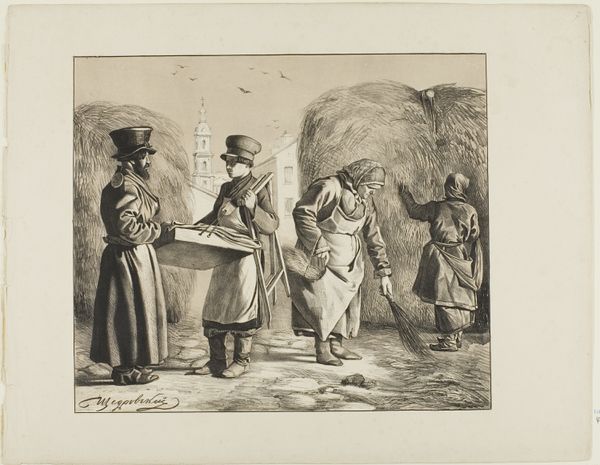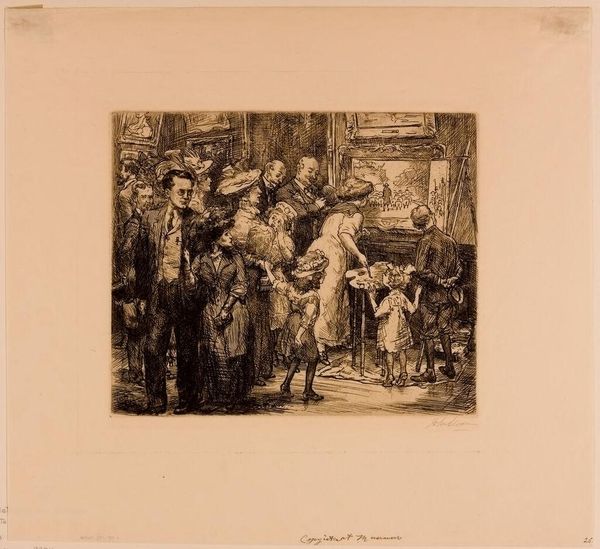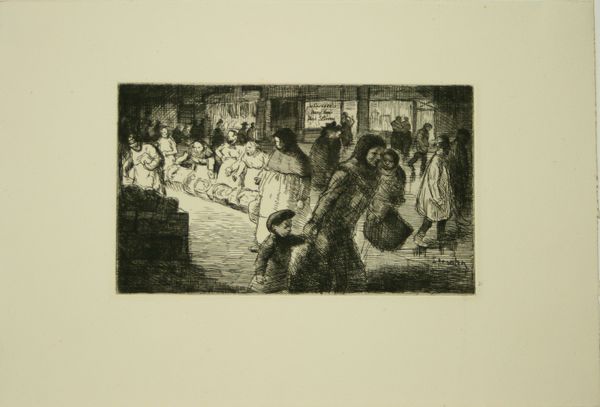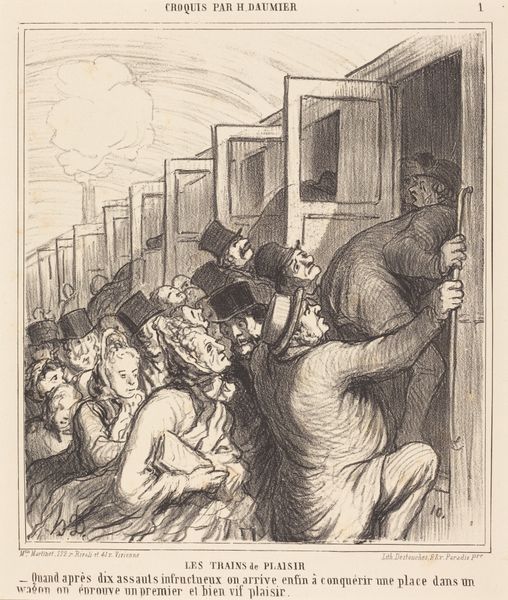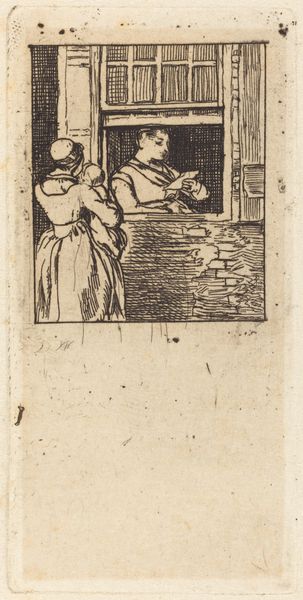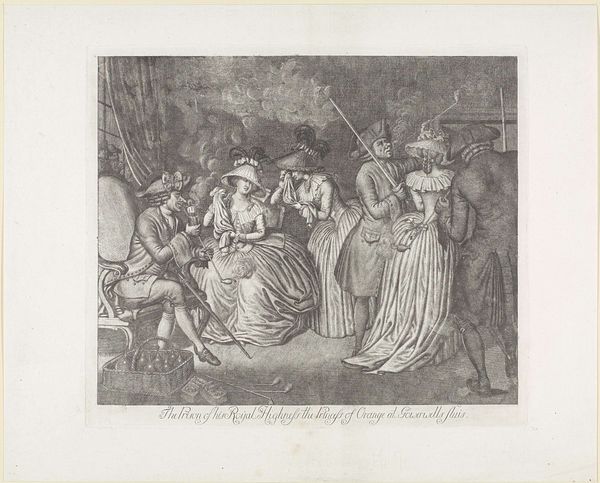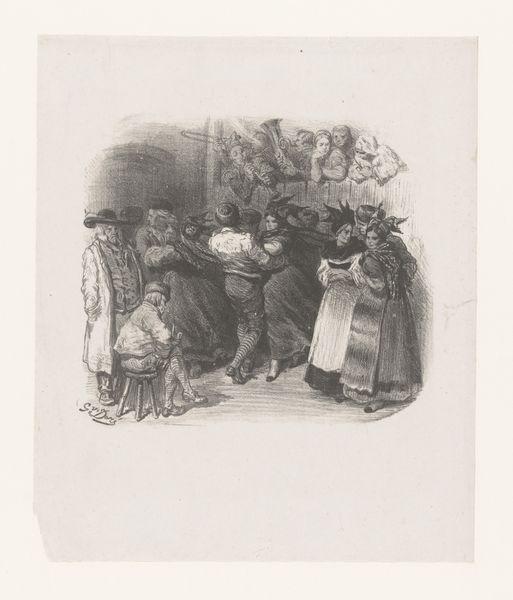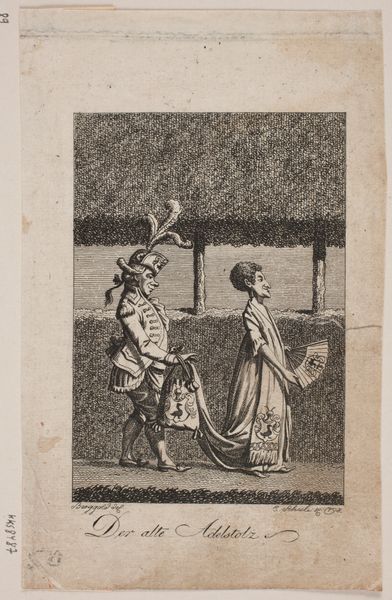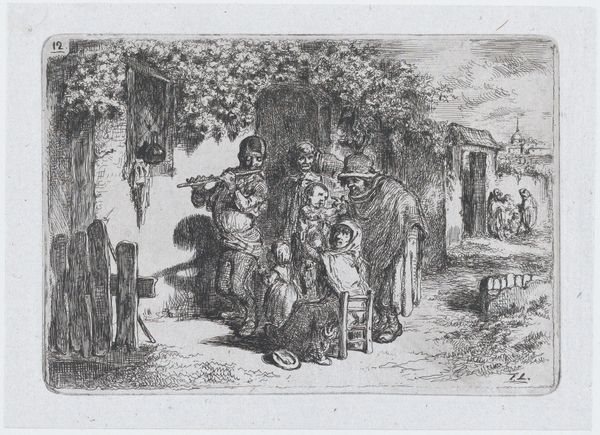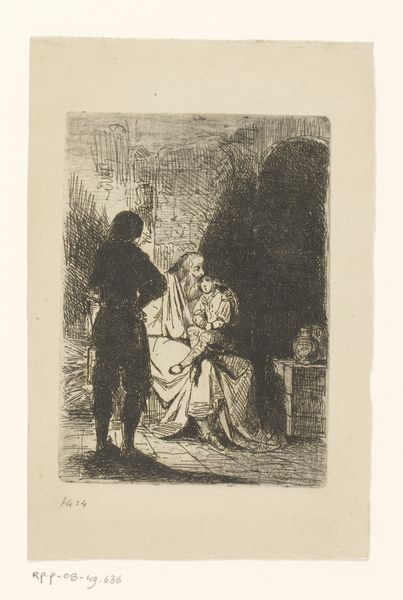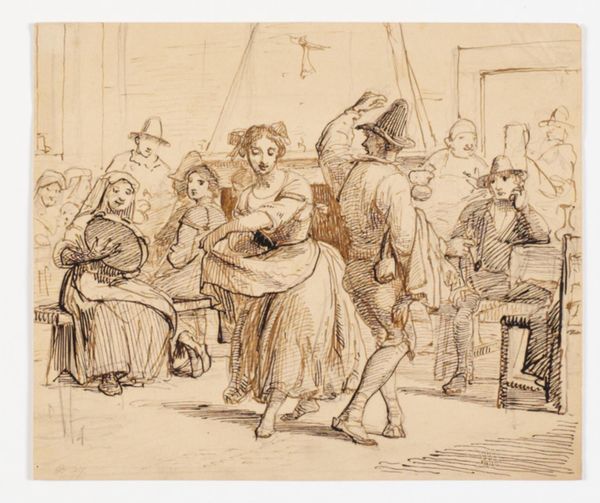
drawing, print, etching, paper
#
drawing
# print
#
etching
#
landscape
#
paper
#
england
#
genre-painting
Dimensions: 140 × 210 mm (image); 89 × 259 mm (plate); 320 × 447 mm (sheet)
Copyright: Public Domain
Curator: At first glance, the etching strikes me as something deeply sentimental and almost staged—but then I see something more complex at play. Editor: We’re looking at “The Day in the Country,” a print etched in 1865 by William Holman Hunt, the British painter associated with the Pre-Raphaelite Brotherhood. It depicts a departure, a parting of ways outside a cottage. Curator: Right, departure—but more than that. Note how tightly Hunt frames the leave-taking scene at the door, even as the distant road implies a journey forward into the unknown. Do you feel the slight air of uncertainty, of mixed emotions hanging in the air? Editor: Absolutely, I’m fascinated by the way Hunt has constructed this tableau. Notice how a pair of women stand in the doorway. The woman about to depart looks to be seeing off another who embraces her—a potent image that suggests leave-taking as an exchange, laden with the baggage of past emotions. Curator: Precisely. The way the other characters arrange themselves hints that there is another implied goodbye between the man in the top hat and the woman in the bonnet as if this departure also splits romantic couples as well. So there are multiple partings at once, creating the etching's mood. What kind of symbol would you say this conveys, precisely? Editor: Ah, a departure—perhaps as a metaphor for the ever-present shadow of change? The dark cat is no accident. Domesticity contrasts starkly with the unknowable outside. Cats have always served as emblems for something familiar but hidden. Consider the folk saying "a black cat crossing your path..." which signifies bad luck and ill omens for many reasons. Here the domestic pet becomes a marker of risk, chance, the vagaries of change. Even in its most literal sense: going out may not be "safe". Curator: It makes you wonder where everyone is headed, doesn’t it? And in pondering the "why" of this, we end up considering our relationships with these very archetypes—home, the journey, the people we let go of… Editor: Leaving this artwork with even deeper questions in tow, than what we might've initially surmised, a perfect summary of why Art is a catalyst of thinking.
Comments
No comments
Be the first to comment and join the conversation on the ultimate creative platform.
